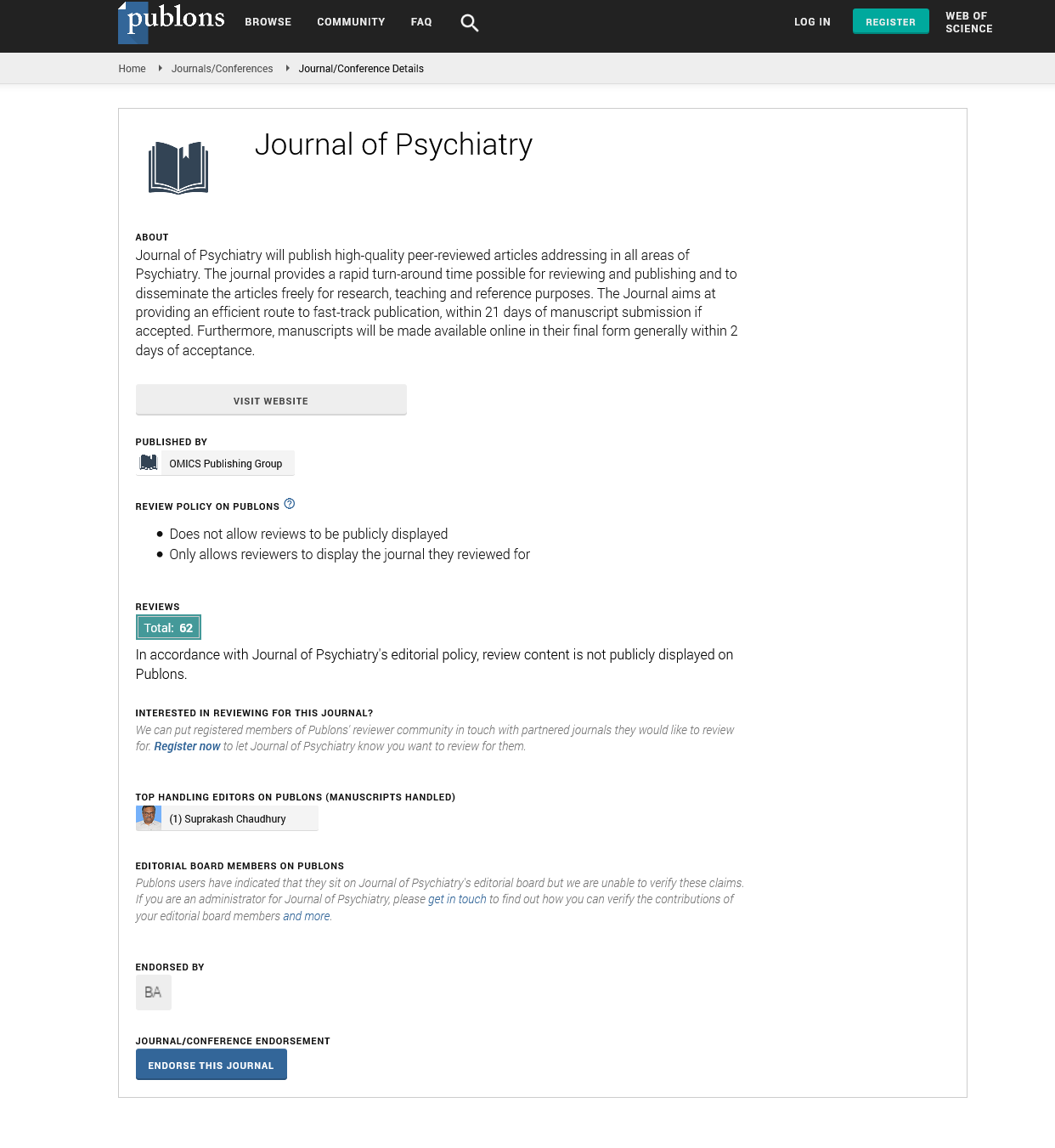Indexed In
- RefSeek
- Hamdard University
- EBSCO A-Z
- OCLC- WorldCat
- SWB online catalog
- Publons
- International committee of medical journals editors (ICMJE)
- Geneva Foundation for Medical Education and Research
Useful Links
Share This Page
Open Access Journals
- Agri and Aquaculture
- Biochemistry
- Bioinformatics & Systems Biology
- Business & Management
- Chemistry
- Clinical Sciences
- Engineering
- Food & Nutrition
- General Science
- Genetics & Molecular Biology
- Immunology & Microbiology
- Medical Sciences
- Neuroscience & Psychology
- Nursing & Health Care
- Pharmaceutical Sciences
Perspective - (2022) Volume 25, Issue 8
Importance of Offering Services for LGBTQ2S+ Youth during COVID-19
Steven Coca*Received: 01-Aug-2022, Manuscript No. JOP-22-17797; Editor assigned: 03-Aug-2022, Pre QC No. JOP-22-17797(PQ); Reviewed: 17-Aug-2022, QC No. JOP-22-17797; Revised: 24-Aug-2022, Manuscript No. JOP-22-17797(R); Published: 31-Aug-2022, DOI: 10.35248/2378-5756.22.25.523
About the Study
When compared to their cisgender and heterosexual counterparts, LGBTQ2S youth have worse mental health and greater rates of substance use, but they also face more obstacles to receiving services. The goal of this environmental scan is to identify the specific programmes and supports for mental health and substance use that are only available to LGBTQ2S kids in Ontario, as well as how these resources have changed over the course of the pandemic. LGBTQ2S+ youth report increased odds of not having their needs met through therapy while having higher rates of mental illness and substance abuse. Men from the LGBTQ2S+ community were less likely to report abstinence after treatment, reported lower levels of connection during treatment, and were more likely to identify "needs not met" as the primary reason for ending treatment early, according to a study of addiction treatment outcomes and experiences using a convenience sample of 81 men from the LGBTQ2S+ community compared with 55 heterosexual men.
There are other obstacles to care that have been noted in the literature in addition to unmet needs. Students who identified as LGBTQ2S+ were significantly more likely to report barriers to accessing on-campus mental health support, and significantly more likely to report multiple barriers, according to a large-scale study of mental health service utilisation across three postsecondary institutions in California. A qualitative study of 104 young people found that there were system level barriers (such as a lack of training to provide affirmative care, the predominance of medication, the accessibility and availability of services, and prior experiences), sociocultural barriers (such as stigma, a desire to keep parents in the dark, and a lack of family support), and individual barriers to receiving mental health care.
The COVID-19 conditions, in which people were much less likely to receive telehealth for mental health help during the pandemic but more likely to be connected to a mental health professional, appear to have worsened these hurdles for some LGBTQ2S+ community members. This study suggests that there is a greater need for mental health treatments geared toward LGBTQ2S+ kids, but it also reveals that there are greater access restrictions. A qualitative study of Black and Hispanic LGBTQ2S+ young adults found several additional barriers, such as stigma associated with mental health symptoms and sexuality, ambivalence about the efficacy of treatment, and a lack of family support as a result of family members' prior negative experiences with mental health interventions. Different social locations intersecting with gender diversity and sexuality also influence experiences within the mental health system.
While there are certain services specifically for LGBTQ2S+ youth now available, more has to be done to guarantee accessibility to these services in Ontario. For instance, our scan revealed that the majority of services were provided in community settings and were concentrated in the Toronto Central Region. Therefore, it will be crucial for future study to think about ways to increase LGBTQ2S+ adolescent access to mental health and drug use services throughout all of Ontario, as well as to identify the locations where these services are most readily available.
Citation: Coca S (2022) Importance of Offering Services for LGBTQ2S+ Youth during COVID-19. J Psychiatry. 25:523.
Copyright: © 2022 Coca S. This is an open-access article distributed under the terms of the Creative Commons Attribution License, which permits unrestricted use, distribution, and reproduction in any medium, provided the original author and source are credited.

